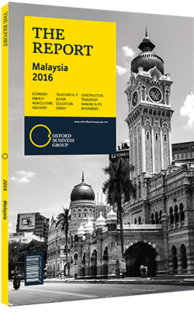Malaysia pushes ahead for sustainable practices and environmentally friendly facilities
As the government aims to drive the internationalisation of the domestic construction sector, it is also evaluating how the quality of construction in Malaysia stacks up. With more and more countries fixated on green growth and development, it is increasingly clear that the construction industry needs to up its game in order to compete globally.
According to the UN Environment Programme, buildings emit a third of global greenhouse gas (GHG) emissions. Altering construction activity towards green and sustainable practices offers the potential to achieve GHG emission reductions, according to the UN, which estimates that by doing so, buildings’ energy consumption could be reduced by 30-80%.
Malaysia has already implemented a variety of energy-efficiency programmes, including minimum energy performance standards and a building sector energy efficiency project. It has also pledged to reduce its carbon emissions by 40% by 2020. In addition to sustainable and energy-efficient programmes, the use of technology such as building information modelling (BIM) and modern construction methods such as industrialised building systems (IBS) can offer considerable improvements to the efficiency of construction projects. At a recent signing ceremony, Rosnah Shirlin, deputy works minister, noted that currently less than 2% of buildings and infrastructure in Malaysia are rated with a sustainability tool.
A Sustainable Model
The 11th Malaysia Plan (11MP) makes a strong push for sustainable practices and environmentally friendly facilities to be folded into all new affordable housing developments and for the construction sector to adopt sustainable and green practices. Legislative initiatives include upgrading infrastructure standards and building rating systems, mandating builders’ compliance regarding sustainable waste management practices through EMS ISO 14001 certification, raising the minimum level of construction workers’ amenities in the code of practice and within standard contracts, and making the awareness and accountability of health, safety and environment compulsory. The Construction Industry Transformation Programme (CITP) includes an environmental sustainability thrust which pursues green growth for sustainability; its recommendations include sustainability requirements within the procurement process for public buildings and infrastructure, accelerated adoption of IBS via the establishment of an inclusive IBS catalogue synchronised with a BIM design library, increased mechanisation and use of technology, and innovations in building research. If all of these recommendations are adopted, the CITP foresees a 4m-tonne CO equivalent reduction per year by 2020, with all large infrastructure projects surpassing sustainability requirements.
Tools Of The Trade
Moving toward these goals, the Construction Industry Development Board (CIDB) and the Real Estate and Housing Developers’ Association (REHDA) signed a memorandum of collaboration in March 2016 to promote low-carbon and sustainable practices and to boost the use of a sustainability rating tool. The memorandum encourages the adoption of the Malaysian carbon reduction and environmental sustainability tool (MyCREST), developed by CIDB and the Public Works Department (PWD). MyCREST incorporates green practices into construction projects and mandates sustainable building with the goal of reducing construction industry’s carbon emissions. The government has mandated that MyCREST be used in all PWD public projects with a value of over RM50m ($12.4m). REHDA members have agreed to use the tool to assess 20 projects.
With a good deal riding on the ability of the sector to build more energy-efficient buildings, members of the sector and government officials will be observing the pilot project. If it shows promise, the take-up of the tools at the sector’s disposal should be brisk.
You have reached the limit of premium articles you can view for free.
Choose from the options below to purchase print or digital editions of our Reports. You can also purchase a website subscription giving you unlimited access to all of our Reports online for 12 months.
If you have already purchased this Report or have a website subscription, please login to continue.

